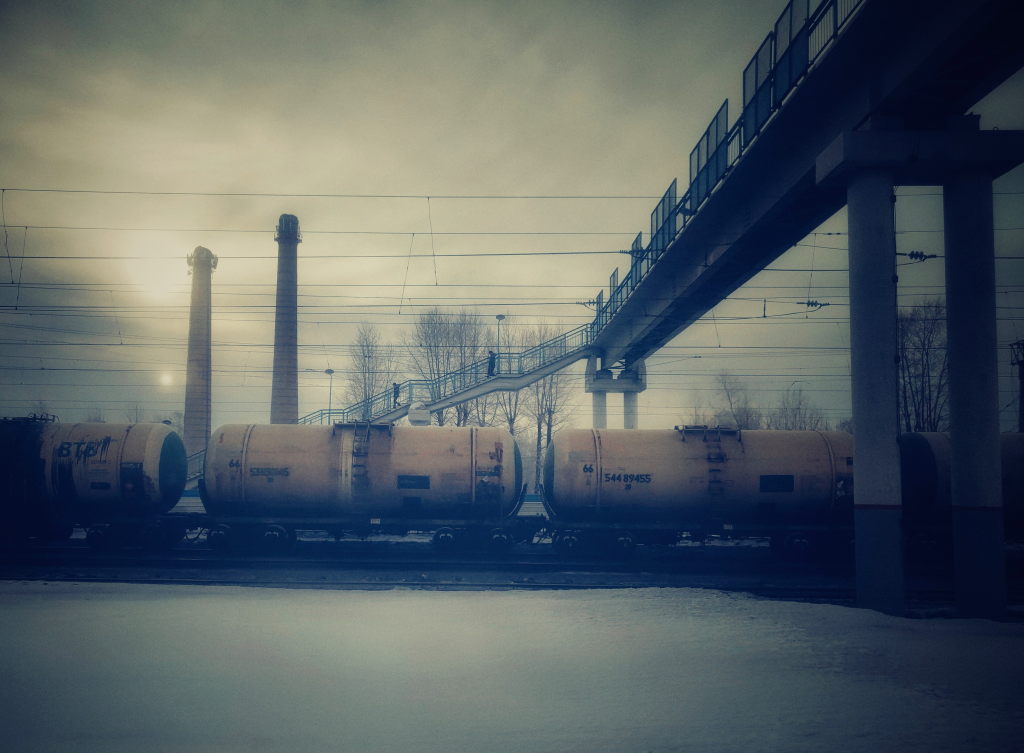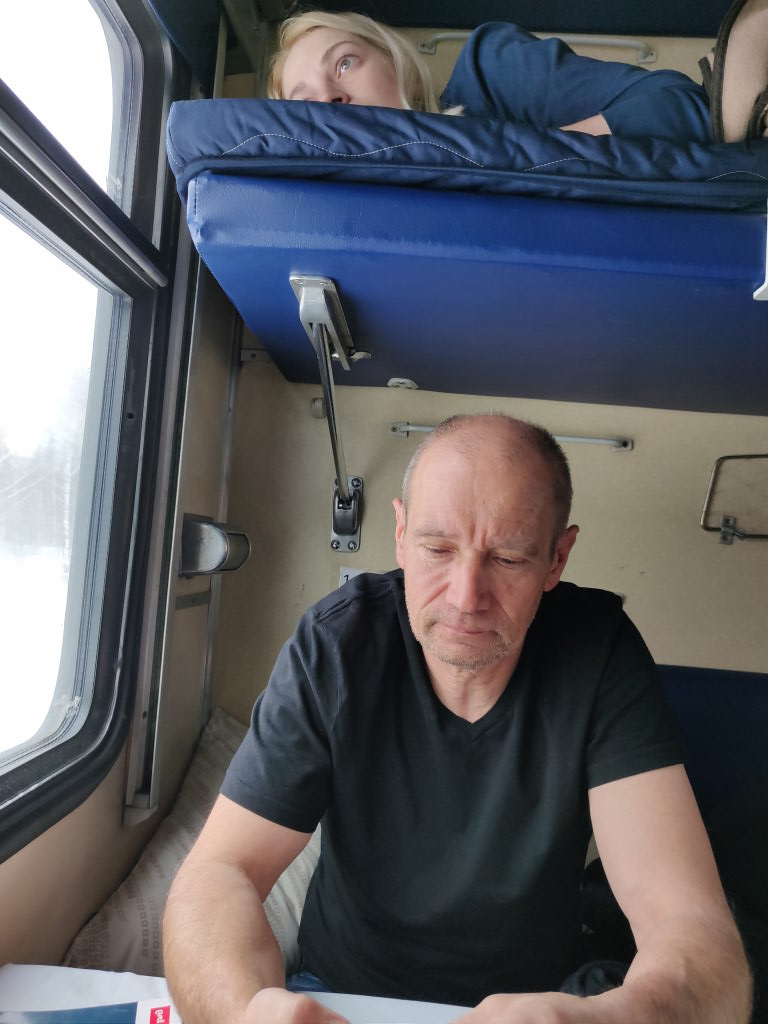Tomsk, the Kyoto of Siberia on the Tom
Novosibirsk-Taiga-Tomsk March 4, 2020Get up at 5 a.m. for the train to Tomsk, the train station is right across the street, but we have to go through security checks that are similar to those at airports. Our assigned
compartment in a clean but much older train than the first one already houses a young recruit and a young woman, whose sleep we disturb. She is very self-confident, a proud
Siberian trait, and obviously has no problems relaxing with three men in a small space.
 It's easy to say goodbye to Novosibirsk
It's easy to say goodbye to Novosibirsk
You can take horrible pictures through the dirty windows
 Back in the compartment to Taïga
Back in the compartment to Taïga
Landmarks of Tomsk
Despite the dawn and the short journey (5 hours), the friendly Provodnitsa gives us bedclothes. The forests and the taiga take on a colder formation, the snow cover increases, we
drive north. As we later learn, Tomsk is a central crossroads on the trade routes in Siberia, was strategically founded at the confluence of the Tom and Ushaika in 1604 to protect
the caravans against raids by the indigenous tribes. And Tomsk became the capital of Siberia until the Trans-Siberian Railway was built past it. Tomsk fell into a deep sleep, which
is good for us because 1500 wooden houses are still there. Tatiana, our guide for two days, is waiting for us at the train station.
Nico and Tatiana
We visit a local historical museum, a street with wooden houses and an Orthodox church. Unfortunately, one Catholic church is closed. It was founded by Germans and exiled Poles who
were very respected in Tomsk because they were very educated. The Orthodox church is very impressive, gilded, but piety prohibits taking pictures.
Wonderful decorations on the wooden houses
The wealthy merchants of the 18th and 19th centuries in Tomsk procured all amenities from Europe. Their world looked very similar to ours. In the 20th century everything changed to
match today's globalization. My impression was always that Siberia is and was empty, but here we learn that this vast land was inhabited by many tribes in historical times and was
often attacked by Chinese, Mongols, etc. Tomsk in the 17th century must be imagined as the last frontier in the Wild West with fewer shootings. We end the evening in a very good
Italian restaurant with pasta and Montepulciano.
Tomsk March 5, 2020I wake up at 9 a.m. and am still tired after a good night's sleep, the time difference is still bothering me, but yesterday's cold has already been overcome. Meditation and early
morning exercise have their place this morning, as we are not due to have dinner with our guide until lunchtime.
We visit the Repression Memorial (Gulag Museum). For one of the few and the central one at that, the museum is far too small, too poorly made, invisible. You have to compare it
with Dachau or similar memorials. And as we later discover, the number of victims is underestimated by several factors. There is still work to be done, dear Russians! But the
travel guides from Lonelyplanet to Tripadvisor don't mention anything about it either.
Map of the Gulags
The Isbas of Tomsk are the main attraction
We cannot understand why the city does not take care of the beautiful wooden house heritage, after all, GAZPROM has its headquarters here and there should be no shortage of tax
money. Only a young doctor takes care of the cultural heritage in his free time and documents the decay.
